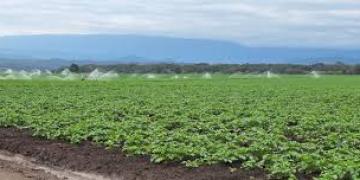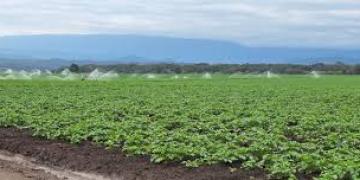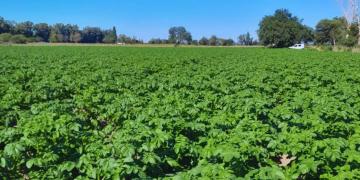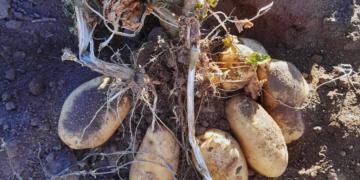Alemania: Researchers develop instructions for the potato of the future
The hybrid potato is intended to make the Germans’ favorite filling side dish fit for disease and the changing climate.
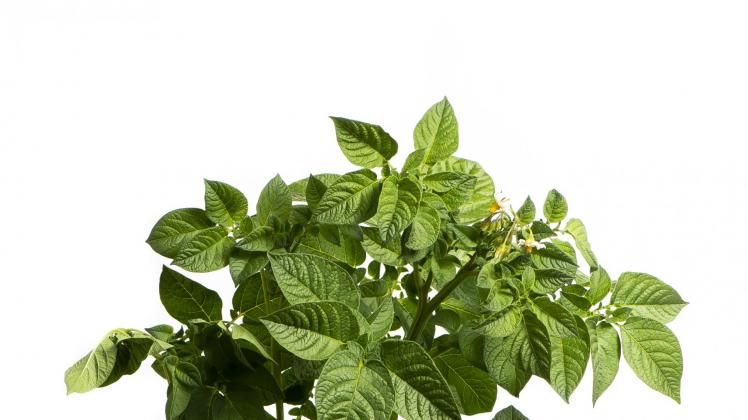
Whether as a puree, in the form of chips or cooked in the classic way: potatoes are an indispensable part of German kitchens. And they are also one of the most important crops for agriculture. We eat 63.5 kilograms of them per capita in Germany, 25.5 kilograms as fresh potatoes, the rest processed, reports the Federal Office for Agriculture and Food for the 2023/24 financial year.
But growing them is a challenge because potatoes are usually propagated using seed potatoes – tubers that are planted directly.
Unlike other field plants, no seeds are used here. "The potato is an exotic plant when compared to other crops such as wheat or barley," says Nils Stein from the Leibniz Institute of Plant Genetics and Crop Plant Research (IPK) in Gatersleben. "Although we are talking about seed potatoes here, vegetative shoots are produced here. The potato tubers are thickened, persistent shoot sections." If you store them in the cellar over the winter and plant them again later, the shoot will grow again. "They are identical offspring of the mother plant. We call them clones."
The problem with complex genetics
But there are a few problems with this type of propagation. Seed potatoes are susceptible to the transmission of diseases such as viruses and fungi, which can endanger the harvest. They are also bulky and heavy, which means effort and expense for the farmer. And because the tubers are genetically identical to the mother plant, potatoes are hardly able to adapt to changing environmental conditions - such as global warming - and diseases. But many potato varieties are sensitive to the changing climate, and developing more resistant varieties is important for the agriculture of the future.
Researchers and seed producers are therefore working on hybrid seed for potatoes. These would be completely normal seeds that save space, have a long shelf life and are less susceptible to disease. "The advantage of hybrid varieties is that they can often produce a higher yield than pure-bred line varieties," adds Stein. But what is already the norm in the fields with corn is not so easy with potatoes. Their genetics make it difficult for experts to produce these hybrid varieties. This requires detailed knowledge of the genome structure of the plant.
What is hybrid breeding?Hybrid breeding is a method of breeding plants or animals that have particularly good characteristics. Two different parent lines with certain, desired characteristics are crossed with each other. The plants are two inbred lines. Since most plants have male and female sexual organs, it is possible to reproduce them with themselves, so that this inbreeding produces almost pure-breeding offspring with exactly the same characteristics in all subsequent generations.Hybrid varieties are equipped with a particularly broad gene spectrum due to their genetically very different parent plants. This means they benefit from the so-called heterosis effect. This always occurs when significantly more powerful offspring are produced from the crossing of two inbred lines. This is also the aim of hybrid breeding: the plants should, for example, be more vital, larger or more resistant to environmental influences or pests. The effect is known for corn, sugar beet, rye or cucumber plants, among others. Crossbreedingis often used in agriculture. Corn, for example, is grown almost exclusively with hybrid varieties. However, hybrids cannot pass on their advantages to offspring, so farmers often use new seeds from specialized producers every year.
Looking for stable parents
Hybrid seeds are always easy to reproduce when you cross two parent plants that are stable, explains Stein. However, with the genetics of the potato, this stability is complicated to achieve. It starts with the inbreeding lines: In most diploid plants, pollen and egg cells from the same plant can be fertilized with each other, explains the plant geneticist. "Then you get homozygous pure-breeding offspring, which means that there is no splitting of characteristics."
However, many potatoes are not compatible with each other - so they cannot be bred within themselves. In addition, genetic variability makes breeding stable parents difficult. "If you grow potatoes in the garden, you get these berries that look like green tomatoes. They are packed with seeds. But if you look at these seeds, the offspring all look different because these plants are highly heterozygous," says Stein. "The formation of gametes, fertilization and seed formation lead to a new combination of these parental characteristics."
A research team from the Chinese Academy of Agricultural Sciences has now taken an important step towards solving this problem, says IPK researcher Stein. They have presented a kind of work manual for hybrid potato research. The man from Saxony-Anhalt was involved in the study in an advisory capacity because he had already done something similar for cereal varieties in the past and was also very interested in the work of his Chinese colleagues.
A tool for hybrid potato breeding
Because the potato actually lacks the prerequisites for breeding hybrid varieties, genome research should help to generate a series of inbred lines - in other words a stable gene pool. For a long time, it was only possible to sequence pure-breeding (homozygous) plants and assemble their entire genome, explains IPK researcher Stein, but with today’s genome sequencing methods it is very possible to do the same for heterozygous plants. "In a genome sequence, you then have all the characteristics and properties listed in a linear sequence."
And that is exactly what the Chinese researchers did in their work. A total of 30 potatoes were sequenced for this purpose, says Stein. "And they managed to assemble the information on the parental chromosomes or haplotypes cleanly and separately from each other." This means that a total of 60 chromosomes (haplotypes) were generated from the 30 genomes. "If we could fertilize one of these 30 with itself ten times in a row, then we would be able to select a homozygous plant from this heterozygous plant," explains Stein. But this is a process that takes place over many plant generations.
He concludes that the research work of Stein’s Chinese colleagues is a basis for hybrid potato breeding in the future. "With these genome sequences, we now have the tools." The most important prerequisite for hybrid potato breeding is the inbred lines, which have to be created first. Only in this homozygous state can you really see which characteristics and mutations have accumulated in a genome and only in this way can the desired characteristics be selected for breeding.
Good prospects for the hybrid potato
The last chapter of the Chinese study is therefore about the next step: What must be done to select the ideal plant haplotypes from the 30 genomes in order to build an initial gene pool for efficient hybrid breeding? That is the next step for the research group, explains Stein.
They have even already succeeded in growing hybrid potatoes: "They have evaluated them in the field and can say that they are not that far removed from classic cultivars in terms of performance and taste." In fact, there are already the first suppliers offering seed in the form of seeds for hybrid potatoes, from which a one-year table potato harvest can be produced.
Genome researcher Nils Stein from the IPK in Gatersleben is interested in potato research, not least because his house also houses a comprehensive gene bank. However, the potatoes are located in Groß Lüsewitz in Mecklenburg-Western Pomerania due to the climatic conditions, he says. The extensive collection consists of 6,000 samples, about half of which are clones of cultivated potatoes.
Cheng, Lin et al.: Leveraging a phased pangenome for haplotype design of hybrid potato. In: Nature. 2025. DOI: 10.1038/s41586-024-08476-9.
Fuente: mdr.de

